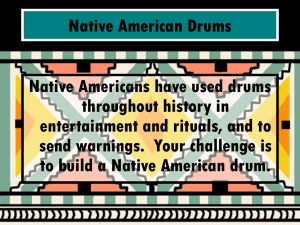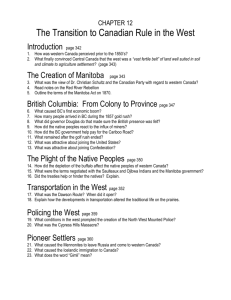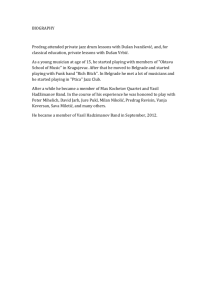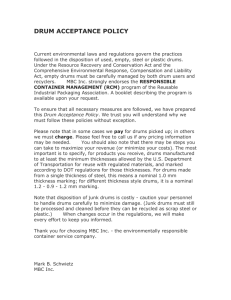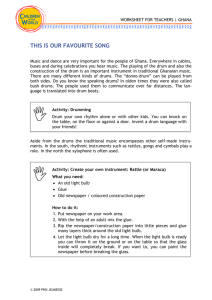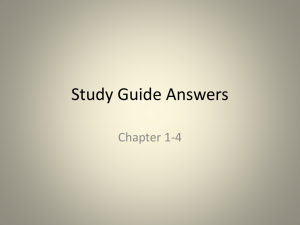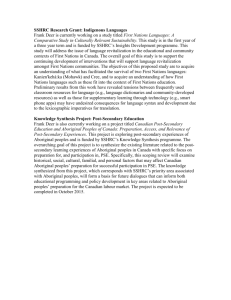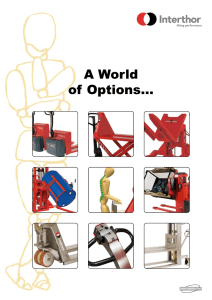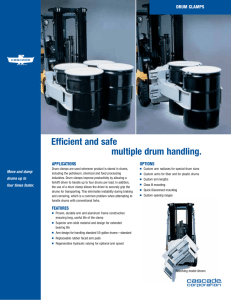File
advertisement
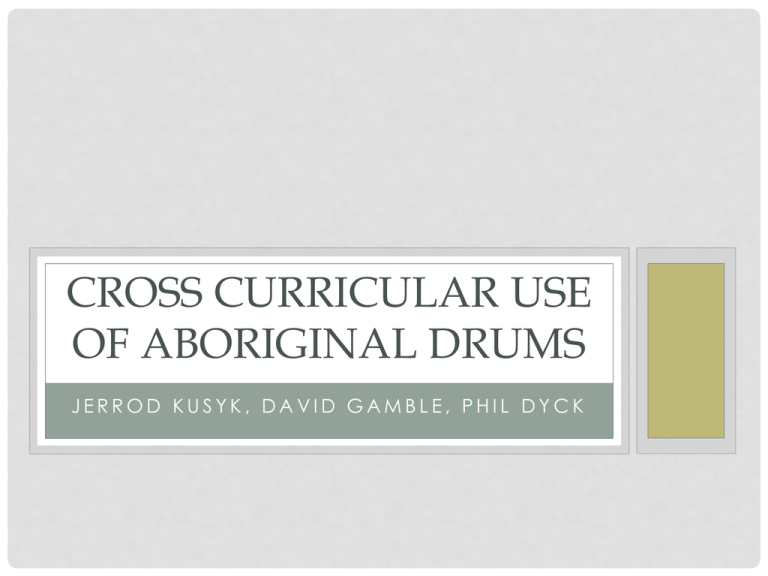
CROSS CURRICULAR USE OF ABORIGINAL DRUMS JERROD KUSYK, DAVID GAMBLE, PHIL DYCK THE DRUM BUILDING PROCESS GRADE 11 • Canadian History – role, significance and variations among the different Aboriginal groups across Canada • Physics – controlling tone and amplitude of a drum by changing the material used. • Industrial Arts – combine traditional and modern building techniques in frame drum construction CANADIAN HISTORY • Aboriginal culture is rich and diverse; difficult to provide a thorough understanding in 1 semester. • Grade 11 Canadian History curriculum has (finally) been updated • Thematic method (First Nations, Metis and Inuit Peoples) • Chronological method (First Peoples and Nouvelle-France) • Enduring Understanding 1 – First Nations, Metis and Inuit peoples have a long history in North America and their diverse and complex cultures continue to adapt. • Learning Experience 1.1 - Who were the First Peoples and how did they structure their world? CANADIAN HISTORY CONT’D • Drumbeat represents the heartbeat of Mother Earth • Drums are used in 4 main categories: • • • • Social Personal Healing Ceremonial • Types of Drums • West Coast – plank, log or box style (no animal hide) • Plains – branches formed into frames or hollowed logs; drumhead of deer, bison or moose skin. • Central – water drums; hollowed logs with skin stretched across. Water would be added or removed. • Arctic – Whale baleen or bone frames with a drumhead of deer, caribou, seal skin or walrus intestines. PHYSICS • Grade 11 Physics has an entire cluster devoted to Sound and includes: • How its created • How it reacts with its environment • How the materials used affect it • Drums create sound by having a thin membrane being stretched over a hollow structure. • The struck membrane causes vibrations, which create pressure waves in the air (sound). PHYSICS CONT’D • Pressure (sound) wave characteristics describe the sound that is heard • Amplitude affects volume • Frequency affects the pitch • S3P-1-17 Investigate to analyze and explain how sounds are produced, transmitted, and detected, using examples from nature and technology. • S3P-1-19 Design, construct (or assemble), test, and demonstrate a technological device to produce, transmit, and/or control sound waves for a useful purpose. DESIGN LOOP INDUSTRIAL ARTS • Aboriginal frame drum construction utilizes both traditional and modern building techniques. • Modern processes and techniques allow for more efficient use of material and time. • Traditional techniques are utilized for the lacing and application of the drumhead • Incorporate the construction of these drums with a Canadian History and/or Physics unit to greatly increase the students understanding of key concepts. INDUSTRIAL ARTS CONT’D • IA11.WW1.1 – Identify common woods, their classification as hardwood or softwood, and their properties such as type, species, grain texture… • IA11.WW5.1 – Identify several common wood joints such as butt, box, dado, dovetail, lap, mitre, mortise and tenon, rabbet, tongue and groove… • IA11.DD6.1 – Identify the common terms and practices associated with product manufacturing drafting such as detail working drawings, assembly drawings, scale models, and prototypes. RESOURCES • Manitoba Education. (2010). Senior Years Industrial Arts. Manitoba. Retrieved from http://www.edu.gov.mb.ca/ k12/cur/teched/ia_framework/glo.pdf • Manitoba Education. (2011), Clusters and Learning Experiences, retrieved from http://www.edu.gov.mb.ca/ k12/cur/socstud/history_gr11/gr11_clusters.html#cluster1 • “Modern Wood working”. By Willis H. Wagner and Clouis E. Kicklighter Rohahes Iain Phillips. (2010), Drum Culture, retrieved from http://www.native-drums.ca/index.php/ Drumming/Culture?tp=a&bg=1&ln=e • Teachings of the Drum, (2010),, retrieved from http:// www.shannonthunderbird.com/Tribal%20Drum %20Teachings.htm • “Technology Education: Safety Resource. By Rachel Baxter and Mary Lorenz”
